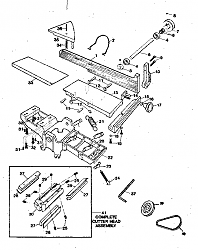Do not try to run the cutterhead at 12,000 RPM! you are going to want about 7,000 RPM max with a machine with bushings rather than roller bearings. those high speeds will just tear up the machine You probably want to double your motor speed, In the States it would be 3450 RPM @ 60hz. in Europe running @ 50hz. will run a tad slower



 LinkBack URL
LinkBack URL About LinkBacks
About LinkBacks



 Reply With Quote
Reply With Quote


 PJ
PJ

Bookmarks